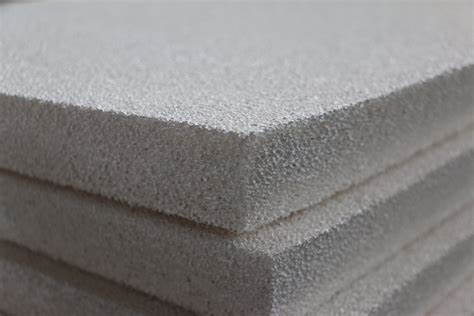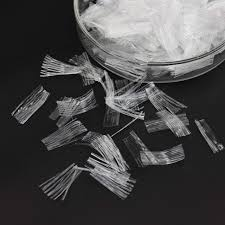Professional solutions on concrete addtives, Concrete Foaming Agent, Superplasticizer, CLC Blocks Additives, and foaming machine
(Effect of mud content of sand and gravel on polycarboxylic acid superplasticizer.)
1. Effect of sand and gravel materials with different mud content on water-reducing efficiency of polycarboxylic acid superplasticizer.
It is well known that polycarboxylic acid is an organic polymer material synthesized by polymers. Its polycarboxylic acid molecular main chain has a comb-like structure composed of highly active groups such as carboxyl, polyoxyethylene, sulfonic acid, and amino. it plays a very important role in concrete. at the same time, these functional groups can combine with water or cement clinker to form molecular chains of different lengths, form staggered spatial positions, and have some polarity, forming electrostatic repulsion. Under these comprehensive actions, polycarboxylic acid has a strong water-reducing function, and whether these water-reducing functions are effective or not depends on the mud content of sand and gravel (less than the particles of 0.075mm). Therefore, in order to understand the influence of sand and gravel material mud content on the tax reduction performance of polycarboxylic acid, we use sand with different mud content to make concrete mixed with polycarboxylic acid superplasticizer. The test was carried out according to the test method of "homogeneity Test method for concrete admixtures" GB8077-2012.
(1) fineness modulus of sand 2.7.
(2) gravel with secondary gradation accounts for 40%, 4.75mm~9.5mm 9.5mm, 19mm, 60%.
(3) the standard cement 310kg is used for cement.
(4) Sand ratio 38%.
(5) Target slump 80mm.
(6) 2% of polycarboxylic acid.
The slump of concrete with sand content of 1.0%, 2.0%, 2.5%, 3.0%, 4.0%, 5.0% and 6.0% was observed.
The experimental results show that:
(1) the water consumption of concrete increases with the increase or decrease of mud content in order to achieve the target slump 80mm.
(2) the sudden change point of concrete soil water demand with the increase of mud content is when the mud content is 3%.
(3) the slump loss in half an hour decreases with the increase of mud content.
(4) the slump loss in half an hour occurs when the mud content is 3%.
2. Analysis of the effect of Mud content on the Water reducing rate of polycarboxylic Acid admixture.
(1) Analysis of the water-reducing principle of polycarboxylic acid.
1 electrostatic repulsion action.
Its electrostatic repulsion mainly comes from the comb structure and strong adsorption force formed by carboxyl and sulfonic acid groups on the molecular structure of polycarboxylic acid. Because carboxyl and sulfonic groups belong to anionic functional groups, it can adsorb cement clinker and form a double layer electrostatic repulsion on the surface to prevent cement clinker from approaching. In addition, polycarboxylic acid forms a film-like structure on cement clinker to strengthen the lubrication between molecular structures. So that the cement concrete paste can form a good fluidity and stable paste.
2 steric hindrance effect.
The comb-like structure of polycarboxylic acid molecules with scattered side chains is the main source of steric hindrance formed by polycarboxylic acid molecules. The homogeneous long chain is mainly a spatial network structure formed by the combination of ether in polycarboxylic acid with hydrogen ions in water. The shorter molecular chain formed by carboxyl group and sulfonic acid group is uneven at the end, and has a certain spatial distance, thus forming two certain spatial distances. It hinders the mutual proximity between the functional groups, thus forming a steric hindrance structure. It also delays the hydration of the concrete paste to a certain extent, and at the same time, it is beneficial for the concrete to maintain friendly fluidity.
3 adsorption.
After polycarboxylic acid is added into cement concrete, its functional group has a strong adsorption effect, which can adsorb small particles, form a wrapping effect, and play a role in dispersing the materials of small and medium-sized particles in concrete, so that the concrete has better fluidity.
(2) Analysis of the influence of sand and gravel mud content on the water-reducing effect of polycarboxylic acid.
1 counteract the adsorption of cement clinker.
When the sand and gravel in cement concrete contains more fine particles and high mud content (less than 0.07mm), these particles are even smaller than cement particles, and a large part of the functional groups in polycarboxylic acid molecules will combine with these fine particles, which reduces the adsorption and wrapping of cement clinker, increases the mutual contact between cement clinker particles, intensifies the hydration of cement molecules, and is easy to produce flocculation.
2 reduce free water molecules in concrete.
Because 0.075mm particles also have strong adsorption to water molecules, some water molecules combine with water molecules of 0.075mm particles, which reduces the free water molecules in cement concrete, reduces the number of cement clinker wrapped by water molecules, and reduces the fluidity of cement concrete.
3 to counteract the steric hindrance.
Because the particles smaller than 0.075mm have a larger specific surface junction and can better form adsorption with polycarboxylic acid functional groups, cement clinker can be a large amount of surplus and aggregation, accelerate the contact and collision times of cement molecules, and accelerate the flocculation of cement.
Concrete Additives Supplier
TRUNNANO is a reliable concrete additives manufacturer with over 12-year experience in nano-building energy conservation and nanotechnology development.
If you are looking for high-quality concrete additives, please feel free to contact us and send an inquiry. (sales@cabr-concrete.com)
We accept payment via Credit Card, T/T, West Union, and Paypal. TRUNNANO will ship the goods to customers overseas through FedEx, DHL, by air, or by sea.
(Effect of mud content of sand and gravel on polycarboxylic acid superplasticizer.)









